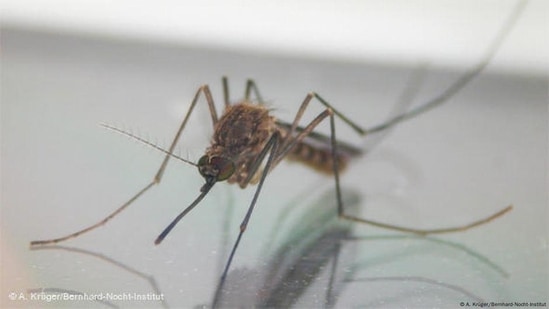
West Nile virus is on the rise: What you need to know
8 months ago | 79 Views
Cases of West Nile virus are rising across Europe and North America, with a peak expected in the coming months. Scientists are meanwhile warning climate change could see the virus spread into new territory this century.
West Nile virus cases are rising in Europe and the United States as the mosquito-borne infection reaches its seasonal peak.
Data from the European Centre for Disease Prevention and Control (ECDC) shows 69 cases had been reported across eight countries by the end of July, with eight deaths reported across Greece, Italy and Spain.
The number of infections is consistent with the ECDC's expectations, though Greece and Spain's cases are higher than previous transmission seasons.
More than 100 cases across 26 US states have been reported so far in 2024.
Historically, August has been the most severe month for West Nile infections in the US. Nearly 28,000 cases and 3,000 deaths from the virus have been reported over the last 20 years, according to the US Centers for Disease Control and Prevention.
What is West Nile virus?
West Nile virus — or WNV — is a single stranded RNA orthoflavivirus in the same genus as dengue, yellow fever and Zika. Many of these viruses can pose severe health risks to infected humans.
How does it spread?
West Nile virus is spread by the common house mosquito (Culex pipiens), which was originally native to Africa but has spread across the world. It is now found not only in Sub-Saharan and North Africa, but also most of Europe and Central Asia, the northern United States and Canada.
Other Culex species capable of spreading WNV are also distributed across southern regions of the world, including South Asia, the Asia-Pacific and the Americas.
Culex mosquitoes act as WNV vectors that transmit the virus when they bite other animals. As well as humans and mammals, birds are susceptible to infection, and migratory species have helped take the virus global.
What are the symptoms and risks?
Health agencies have noted that a WNV infection will be symptomless for many people.
However, in some cases — around 20%, according to the ECDC — a person may develop West Nile Fever, with symptoms including headaches, nausea, fatigue and malaise, and swelling of the lymph nodes. Most of the time, these symptoms will clear within a week, but severe cases may require special medical attention.
Fewer than 1% of cases result in West Nile Virus Disease, a serious infection of the central nervous system that leads to meningitis, encephalitis or acute flaccid myelitis — conditions that can be fatal or result in lifelong complications.
Older age groups, those with high blood pressure or blood disorders, diabetes, kidney disease or alcohol-related illnesses are among the groups most at-risk.
Prevention and treatment
There is currently no vaccine for WNV, and prevention usually comes down to the use of local control against mosquito exposure.
These measures can include barrier controls, such as wearing body-covering clothing, using mosquito nets and screen doors, or chemical controls such as insect repellents. Individuals and communities can also help restrict environmental conditions that favor mosquito breeding and habitat.
Climate change's role in spreading West Nile virus
While current case numbers are consistent with previous outbreaks, there are concerns WNV may become more widespread amid future climate change scenarios. In Europe, for example, cases are currently most common in nations close to the Mediterranean Sea.
However, a 2023 study published in the journal One Health found even in best-case climate change scenarios, the "high risk" range for WNV-transmitting mosquitoes could see much of central and western Europe at risk of infection by around 2050.
This phenomenon doesn't just apply to WNV, but to many other vector-borne diseases as well. In March, researchers writing in the Journal of the American Medical Association cited changes to "geographic range, seasonality, and intensity of transmission" of mosquito, tick and rodent borne diseases, as consequences of increasing global temperatures.
Read Also: Mpox outbreak declared a public health emergency in Africa: Here's all you need to know





















